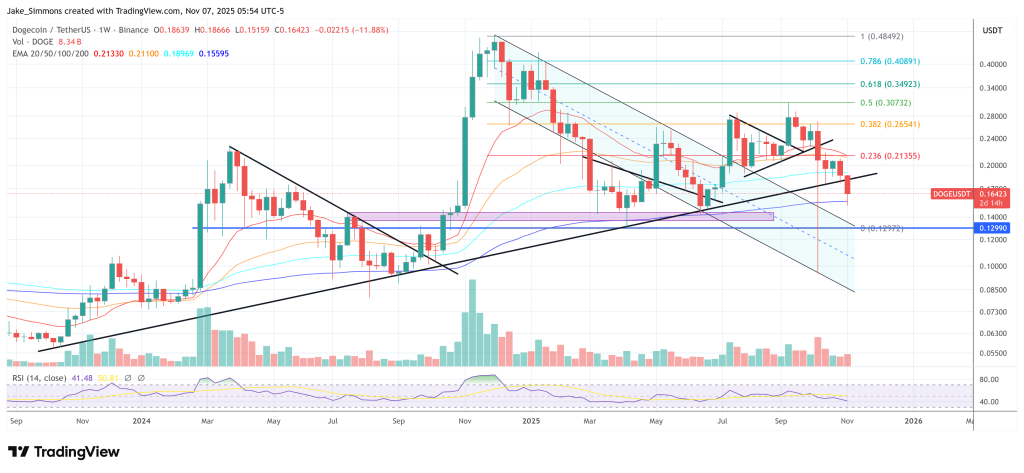
content, reviewed by leading industry experts and seasoned editors. Ad Disclosure
Bitwise Asset Management appears to have set the clock for the first US spot Dogecoin ETF to go effective as early as Tuesday, Nov. 26, after invoking Section 8(a) of the Securities Act—an approach that makes a registration statement automatically effective in 20 days unless the Securities and Exchange Commission (SEC) intervenes.
Bloomberg’s senior ETF analyst Eric Balchunas flagged the maneuver on Friday, writing: “Looks like Bitwise is doing the 8(a) move for their spot Dogecoin ETF, which basically means they plan on going effective in 20 days barring an intervention.”
Countdown For A Spot Dogecoin ETF Is Now Ticking
The legal basis rests on the mechanics of Section 8(a). When an issuer removes the standard “delaying amendment” language from its S-1 registration and specifies effectiveness “in accordance with Section 8(a),” the filing is slated to become effective automatically after 20 days—unless the SEC acts to stop, delay, or require further amendments.
Context matters. In September, the SEC adopted generic listing standards that streamline the path for spot digital-asset ETFs on major exchanges, replacing the previous case-by-case 19b-4 gauntlet and compressing timelines. That policy shift has coincided with issuers increasingly leveraging 8(a) to go effective without an explicit “green light” order, as seen during October’s government shutdown when several non-BTC/ETH crypto ETFs launched after dropping their delaying amendments.
The October precedents are the real story behind Dogecoin’s timeline. On October 28, Bitwise’s Solana Staking ETF (ticker: BSOL) began trading on the NYSE, giving investors 100% direct SOL exposure with staking economics in the wrapper; within hours it established orderly primary and secondary market flow and became the reference instrument for US SOL exposure.
In parallel, Canary Capital listed a spot Hedera product on Nasdaq under ticker HBR, opening regulated access to HBAR and demonstrating that smaller-cap networks could also clear the operational bar on day one.
Those launches landed while the SEC’s capacity was constrained, and they arrived precisely because issuers had removed the delaying amendments and allowed their S-1s to go effective after 20 days.
Balchunas’s read on Dogecoin—“plan on going effective in 20 days barring an intervention”—aligns with how those October debuts actually materialized. In each case, there was no splashy, bespoke approval order; instead, the clock simply ran under 8(a) and trading commenced when the window closed without SEC objection.
That is why the implied calendar date matters here: as Bitwise pulled its delaying amendment on November 6, the statutory count points to effectiveness around Tuesday, November 26, assuming the Commission does not intercede with a stop order or a further-amendment request which could as depend on the end of the US government shutdown.
At press time, DOGE traded at $0164.
 DOGE remains above the 200-week EMA, 1-week chart | Source: DOGEUSDT on TradingView.com
DOGE remains above the 200-week EMA, 1-week chart | Source: DOGEUSDT on TradingView.comFeatured image created with DALL.E, chart from TradingView.com

Editorial Process for bitcoinist is centered on delivering thoroughly researched, accurate, and unbiased content. We uphold strict sourcing standards, and each page undergoes diligent review by our team of top technology experts and seasoned editors. This process ensures the integrity, relevance, and value of our content for our readers.
.png)




